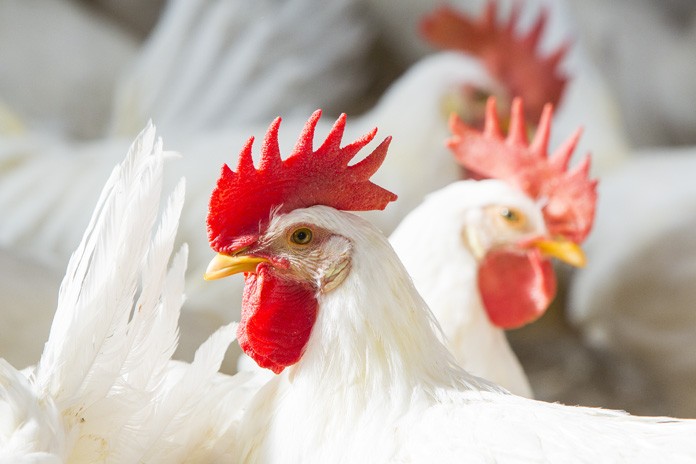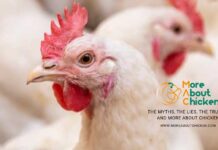
Light intensity may influence broiler behaviour and consequently affect broiler welfare and productivity. However, there are discrepancies in the literature about the effects of various light intensities on meat chicken behaviour.
Few studies have investigated the welfare implications of behavioural changes induced by varying light programs. Here the effects of light intensity on meat chicken leg health and productivity, as part of a larger project on the effect of light intensity on welfare and productivity are reported.
A total of 1,872 Ross 308 broilers of mixed sex were studied across two replicates in an environmentally controlled shed, with 24 pens per treatment starting with 39 birds each (aiming for ≈34 kg/m2 of floor space stocking density at 35 days of age). Following placement, birds were kept at 30-50 lux on a 23L:1D photoperiod. Treatments started on day 8 with the birds exposed to one of two light intensity levels: 5 lux (industry standards) or 20 lux (RSPCA Approved Farming Scheme minimum standard), on a 16L:8D photoperiod with 30 min sunrise and sunset periods. Lighting was delivered through LED lights placed above each pen and light intensity was checked weekly 25 cm above the litter.
The shed was divided lengthwise using light proof curtain divided into two treatment sides, reversed between replicates. A pink noise was provided from day 1 and played continuously through playback recorders in order to cover possible vocal and activity noise effects between treatments. Production measures (body weight of four birds per pen, pen feed and water intakes) were taken weekly from 7 to 49 days of age. Leg and foot leg condition – footpad dermatitis, hock burns, leg straightness – were assessed at 46 days (≈30 birds per pen).
Continuous data were normally distributed and analysed using Proc MIXED in SAS, accounting for pen as the experimental unit and repeated measures when applicable. Categorical data were analysed using Chi-square tests.
Body weight differed according to the interaction of treatment × sex × week (P<0.01), with males under 5 lux being heavier than males under 20 lux by weeks 6 and 7, and females under 5 lux being heavier than females under 20 lux by week 7 (all P<0.01). There were no differences in feed and water intakes. Footpad dermatitis was more prevalent in birds under 5 lux than under 20 lux (0/1/2 scores: 67/22/11% vs. 76/8/16%, respectively, P<0.001). Hock burn prevalence for birds under 5 lux was consistent across replicates (replicate1: 49%; replicate 2: 51%) whereas birds under 20 lux had a lower prevalence in replicate 1 (24%, P<0.001) but higher prevalence in replicate 2 (68%, P<0.001). Litter moisture was higher in replicate 1 than replicate 2 (47% vs. 32%, P<0.001). Leg straightness did not differ according to treatment.
Birds under 5 lux grew faster, but had a higher prevalence of foot pad dermatitis, whereas birds under 20 lux could be more or less susceptible to hock burn. Further analyses are on-going for welfare measures such as behavioural activity and corticosterone concentrations.
From the Australian Poultry Science Symposium

















